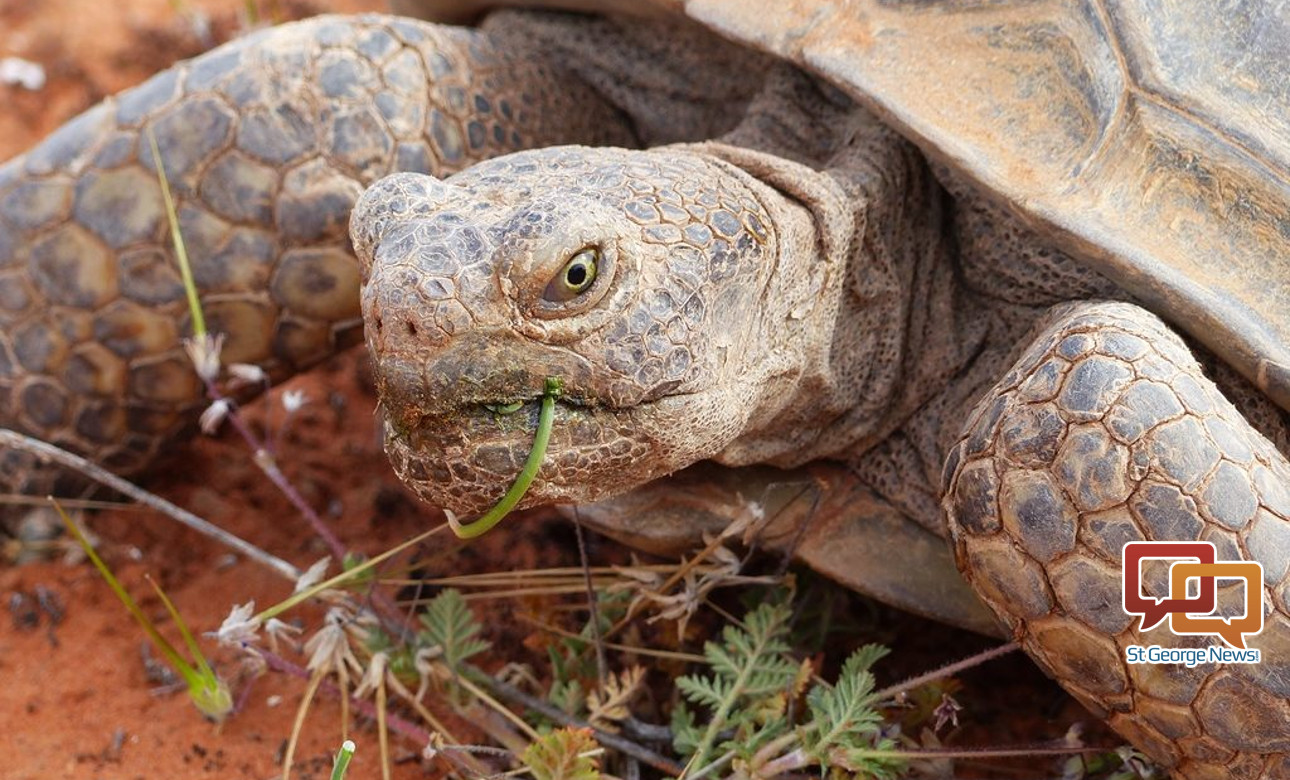
ST. GEORGE — Red Cliffs Desert Reserve officials say they are worried that a skyrocketing raven population poses a major threat to the recovery of the threatened Mojave desert tortoise.

During last week’s meeting of the Habitat Conservation Advisory Committee, the body that oversees the Habitat Conservation Plan, or HCP, that guides management of the reserve, there was discussion about raven predation of the tortoise along with a proposed measure to combat it.
The raven population in the Mojave has increased 1,500-2,500%, Cameron Rognan, HCP administrator, told the committee. That is largely due to the ravens being “subsidized” by human development – that is, providing sources of food and water that were once unavailable. It has allowed the birds to expand their numbers dramatically and pose an ever-increasingly threat to the desert tortoise population within the reserve.
“It is a significant threat,” Rognan said, noting the ravens are going after the smaller tortoise hatchlings.
As a hatchling’s shell hasn’t yet hardened, a crow can easily peck its way through and consume the tortoise’s innards.
While the HCP administration has begun to monitor the raven issue within the reserve, Rognan said, it has yet to be able to quantify how much damage the ravens may be doing to the resident tortoise population.

Lura Snow, the HCP’s outreach coordinator, told St. George News Friday that there has been at least nine witnessed incidents of ravens preying on the desert tortoise within the last two weeks.
“I’ve witnessed the raven predation too,” she said.
Raven predation is considered a major threat across the desert tortoise’s territory, which reaches into Nevada, Arizona and Southern California. The HCP’s technical committee previously recommended that a raven management plan be drafted with insights from other areas that have already drafted such plans.
A proposed method of combating the ravens came in the form of population control method called “egg oiling.”
When applied to bird eggs, the oil causes the embryo to stop developing and is considered a nonlethal and humane method of bird population control. While keeping the local raven population from increasing, Snow said, it also helps stop the ravens from teaching a new generation about how easy it is to pick off the smaller tortoises.
It is also hoped that by oiling the eggs, it will make the ravens think the area they’ve chosen to nest in isn’t viable for egg laying and go somewhere else, Snow said.
The HCP administration has submitted applications to use egg oiling to the Utah Division of Wildlife Resources, U.S. Fire and Wildlife Service, and the Bureau of Land Management.

While permits may be issued by the DWR and Fish and Wildlife Service, there’s a snag with getting BLM approval in the near future.
Dawna Ferris-Rowley, the BLM representative on the HCP advisory committee, said any predator control measure proposed for BLM-managed land must undergo the review process set up by the National Environmental Policy Act, or NEPA.
Unfortunately, the local BLM does not have the personnel or resources to initiate a study this year, she said. However, a third party could be contracted to get that process started.
Ivins Mayor Chris Hart, who also sits on the HCP advisory committee, expressed frustration that the BLM didn’t appear to have an expedited process to deal with the predator issue.
“It just strikes me that we go to such great lengths to minimize the loss of the tortoise, and yet, if they’re getting picked off by birds, it troubles me that its such a difficult effort to mitigate that threat,” Hart said.
The HCP advisory committee appeared open to pursuing a third-party option.
Still, according to a report from the HCP technical committee, the ravens causing problems are suspected to be nesting on BLM land within Red Mountain wilderness area.
Until they are able to get permission to go egg oiling on BLM lands, Snow said HCP staff will use it on state lands within the reserve once the application is approved.
If anyone sees a raven attacking a tortoise, they can chase the raven off and report the tortoise to the HCP or wildlife officials if it appears injured, Snow added.
Email: [email protected]
Twitter: @MoriKessler
Copyright St. George News, SaintGeorgeUtah.com LLC, 2019, all rights reserved.